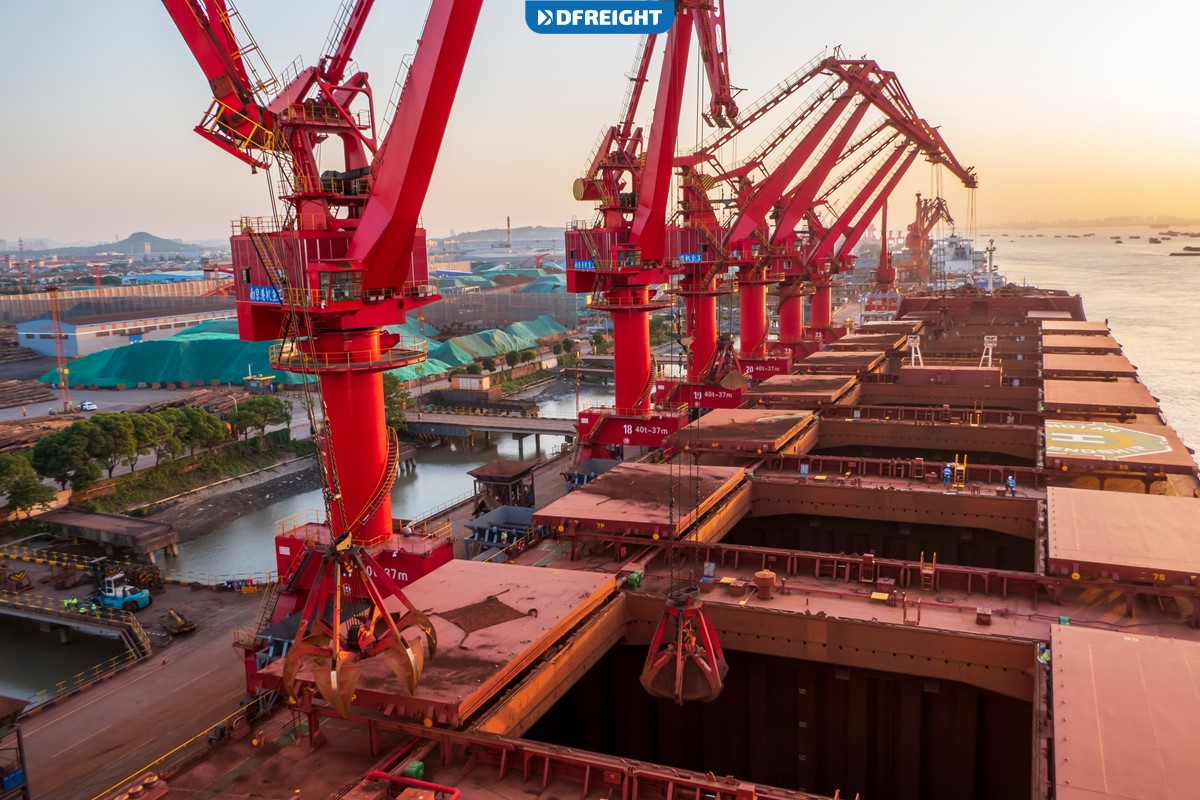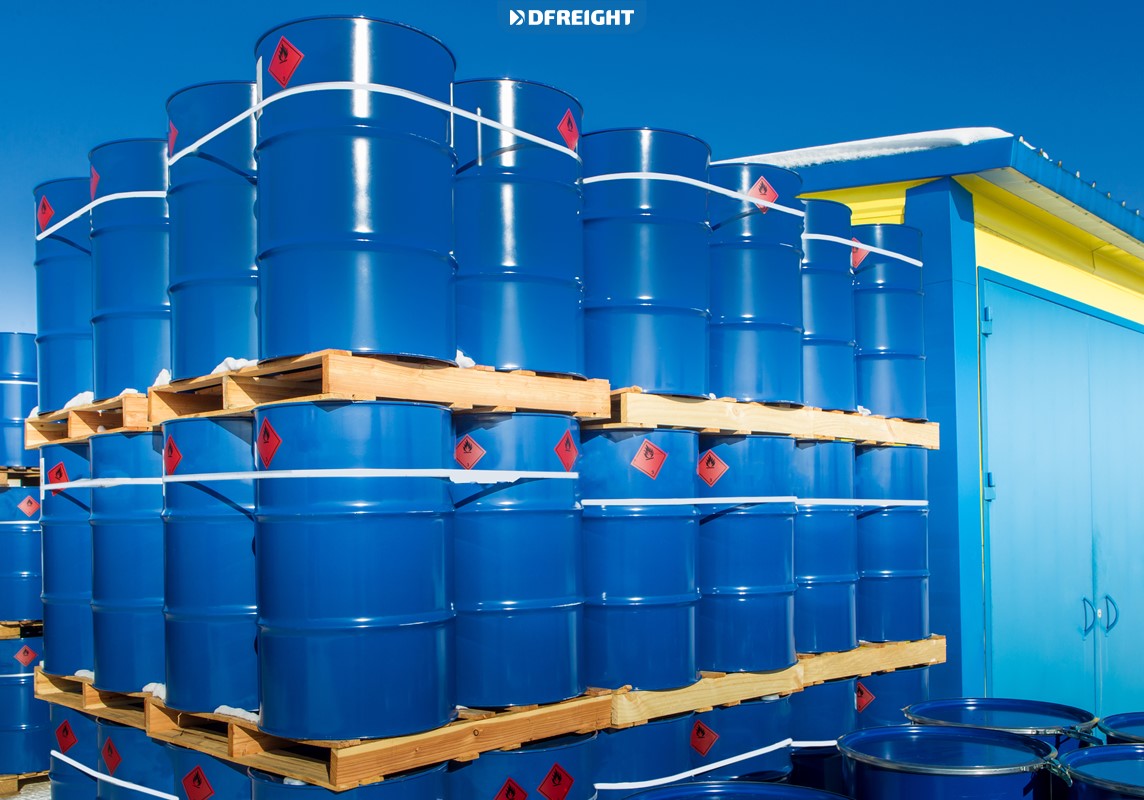Many types of cargo need to be transported by ship. Break bulk cargo is one type that is often transported worldwide. This type of cargo is defined as non-containerized cargo that is loaded and unloaded individually. Break bulk cargo requires special handling and often needs to be transported on a specific type of ship. There are both advantages and disadvantages to shipping break bulk cargo. Continue reading this post If you’re interested in learning more about this type of cargo and its shipping requirements.
Table of Contents
What Is Break Bulk Cargo?
Break bulk cargo is any type of freight that cannot be containerized and must be loaded and unloaded individually. This type of cargo is often too large or oddly shaped to fit into a standard shipping container, so it must be loaded directly onto the vessel. Break bulk cargo must be securely lashed down to prevent it from shifting during transit and causing damage to the vessel or other cargo.
This type of cargo is often more expensive to ship than containerized freight due to the extra time and labor required to load and unload it. Moreover, break bulk cargo is often perishable, so it needs to be shipped quickly. This type of cargo is also often heavy, so it needs to be shipped on a vessel that can handle the weight.
A Brief History of Break Bulk Cargo
Break bulk cargo originated in the days of sail when ships had to be loaded by hand. This was a time-consuming and labor-intensive process. Break bulk cargo continued to be the norm through the early 20th century.
The advent of containerization in the 1950s significantly increased the efficiency of cargo shipping, but break bulk cargo remains an important part of the shipping industry.
Today, break bulk cargo is often used for oversized or heavy items that cannot be easily containerized. This includes items like machinery, vehicles, lumber, and steel. It is also used for perishable goods, such as grains and fresh produce, that need to be loaded quickly.
To learn more about the transformation of general cargo handling and trade from break-bulk to containers, read the scientific article on Springer.
The Difference Between Bulk and Break Bulk Cargo
Bulk cargo is material that is transported in large, undivided quantities. It is often transported in containers but can also be transported in ships, trucks, or trains. This type of cargo is often homogeneous, meaning it is all the same material (e.g., coal, grain, iron ore). Bulk cargo is typically transported in bulk carriers, which are vessels specifically designed to carry large volumes of bulk cargo.
Break bulk cargo is material that is transported in smaller packaging such as palletized, bagged, strapped, bundled, drummed, and crated. It is often transported in ships but can also be transported in trucks or trains. This type of cargo is often heterogeneous, meaning it is made up of different materials (e.g., cars, lumber, machinery). Break Bulk cargo is typically transported in general cargo vessels, which are vessels designed to carry various types of cargo.
Ships for Carrying Break Bulk Cargo

Break Bulk, Multi-Purpose, or General Cargo Vessels are the names of the ships transporting these break bulk loads. They come in a range of sizes, ranging from 2000 DWT to 40,000 DWT, and various types, including Single Decker, Tween Decker, and Box Holds. Cargo can be loaded below, on, or between decks (tween deck).
In a multi-purpose or break bulk vessel:
- The cargo may belong to different clients.
- There’s no need for a terminal or specific berth.
- It can operate from any available berth.
Break Bulk Ships are available in two types:
- Gearless: These ships can only dock at terminals that have the necessary cargo handling equipment because they lack their own cranes and/or other cargo handling equipment.
- Geared: These ships can dock at any acceptable berth at the port for cargo operations since they are equipped with their own cranes and/or other cargo handling machinery.
The Advantages of Break Bulk Cargo Shipping
There are many advantages to break bulk cargo shipping. One advantage is that break bulk cargo ships can carry a wide variety of cargo, including oversized and heavy lift items that may not be able to be transported on container ships.
Another advantage is that break bulk cargo shipping is often less expensive than container shipping since container ships require special equipment and infrastructure that can drive up costs.
Additionally, break bulk cargo shipping typically has shorter transit times than container shipping since container ships often have to make stops at multiple ports to load and unload cargo. This can be beneficial for time-sensitive shipments.
Finally, break bulk cargo shipping is more flexible than container shipping since cargo can be loaded and unloaded at any port that can accommodate the ship without the need for special infrastructure.
The Disadvantages of Break Bulk Cargo Shipping
One of the main disadvantages of break bulk cargo shipping is that it is very labor intensive. This means that it requires a lot of manpower to load and unload the cargo, which can lead to delays and extra costs.
Another disadvantage is that break bulk cargo is often more difficult to handle and store than containerized cargo, leading to delays and extra costs.
Finally, break bulk cargo is often more vulnerable to damage and theft than containerized cargo, which can result in losses for the shipper.
Break Bulk Cargo Packaging
Break bulk cargo packaging can be done in a number of ways as the following:
Bagged Cargo
Bagged cargo is a break bulk cargo packaging type where items are placed in bags before being loaded onto a vessel. Some examples of items that are often shipped in bags are grain, coffee beans, and sugar. These items are difficult to package in other ways and must be protected from the elements during transport. Bagged cargo can be more expensive to ship than other methods, but it can provide peace of mind for shippers who are worried about their cargo being damaged in transit.
Crates and Corrugated Boxes
Crates and corrugated boxes are popular methods of break bulk cargo packaging. Their durability and stackability make them ideal for storing and transporting large quantities of goods. Common examples of items that are shipped in crates and boxes include furniture, appliances, machines and machine parts, and fruits. Crates and corrugated boxes are typically palletized during transit to stabilize the loads and facilitate loading.
Barrels and Drums
Barrels and drums are a common type of break bulk packaging. They are often used to package liquids and powders but can also be used for dry goods. Barrels and drums come in various sizes and can be made from different materials, such as plastic, metal, or wood. They are a popular choice for break bulk packaging because they are relatively inexpensive and easy to transport. They can be stacked on top of each other, which saves space. Barrels and drums can also be reused, which makes them a more suitable choice for sustainability than other types of packaging.
Some examples of products that are often packaged in barrels and drums include crude oil and associated products, paint, alcoholic drinks, grains, flour, sugar, salt, coffee beans, and tea leaves. Special heavy-duty wedges are required to stop barrels and drums from rolling when they are kept on their sides. Barrels may occasionally have packing material inserted between them to keep them from rubbing against one another.

Break Bulk Cargo Loading and Unloading
1. Preparing the Vessel: Before receiving a break bulk load, the ship’s holds or storage spaces must be washed, cleaned, and dried.
1. Securing the Vessel: This can be done by mooring the vessel to a pier or anchoring it in a safe location. Once the vessel is secured, the next step is to prepare the cargo for loading. This involves ensuring that the cargo is properly packaged and labeled.
2. Loading the Cargo onto the Vessel: This can be done using a crane or other lifting device. The cargo must be placed in the correct location on the vessel so that it is secure and will not shift during transit.
3. Securing the Cargo: This can be done by tying it down or using straps. Once the cargo is secure, the vessel can be prepared for departure.
4. Unloading the cargo from the Vessel: This can be done using a crane or other lifting device. The cargo must be placed in the correct location on the pier or receiving area to be properly unloaded.
5. Inspecting the Cargo for Damage: If there is any damage, it must be reported to make proper repairs. Once the cargo is inspected, it can be delivered to the final destination.
6. Preparing for the Next Load: After unloading is finished, a ship’s stowage space must be thoroughly cleaned, scrubbed, and dried before it is prepared to accept the next load.
Wrap Up
While break bulk cargo shipping has many advantages, it is important to remember that it also has some disadvantages. One of the biggest disadvantages is that its loading and unloading can be very time-consuming. This means that you will need to have a lot of manpower on hand to get the job done.
In addition, you will need to have the right type of ship to transport the cargo. Break bulk cargo ships are typically much larger than container ships, so you must ensure that you have enough space to accommodate them. Finally, you will need to be very careful with the packaging of break bulk cargo. This is because the cargo is often very heavy and can easily be damaged.
Need Help with Shipping Your Break Bulk Cargo?
DFreight is a digital freight forwarding company that is partnered with several giant shipping lines worldwide. We are specialized in shipping a wide range of cargo types, including break bulk. We can help you move your break bulk cargo with a fleet of ships designed to transport this type of cargo safely and efficiently. We also offer various packaging options to protect your cargo during shipping. We offer competitive rates and can work with you to find the most affordable shipping solution for your needs. Contact us today for a consultation and to ask for a free quote for your shipment.
FAQs
What is break bulk cargo?
Break bulk cargo is a type of cargo that is not containerized and is instead transported in its individual pieces, or “breaks.”
What are the benefits of shipping break bulk cargo?
Shipping break bulk cargo offers many benefits, including the ability to transport heavy and oversized items, the ability to mix different types of commodities in a single shipment, and lower shipping costs.
What are the challenges of Break Bulk Cargo?
Break bulk cargo can pose challenges, such as the need for specialized equipment and personnel and the increased risk of damage to the cargo.
How is break bulk cargo transported?
Break bulk cargo is typically transported via a break bulk, multi-purpose, or general cargo vessel, although it can also be transported by train or truck.
Can DFreight help me to transport my break bulk cargo?
Yes! DFreight is a leading provider of cargo transportation services from/to the UAE. We can help you transport your break bulk cargo safely, quickly, and efficiently.














